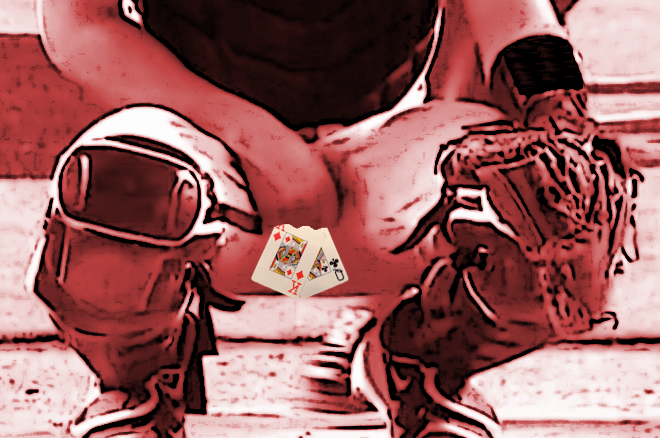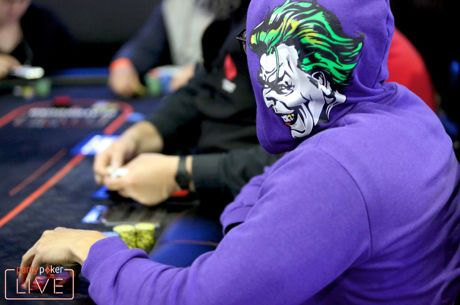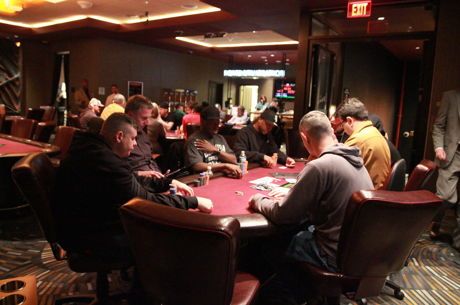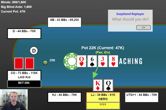On Stealing Signs and Covering Your Cards

Like a lot of sports fans, now that the Major League Baseball playoffs are in full swing, I'm finding myself paying more attention to baseball here in October than I do during the long regular season.
By now I've picked up on a few of the interesting subplots that are in play, including the massive multi-million dollar bets one Houston businessman is making on the Astros to win it all.
There is another story involving the Astros that concerns a topic that seems to overlap a lot with poker �� especially these days amid the ongoing Mike Postle cheating allegations.
It has to do with Houston's reputation for being especially adept at stealing signs �� an interesting element of baseball that is both a genuine strategic maneuver and a frequent source of heated arguments about fairness. As happens in poker, it's one of those actions that invites a lot of discussion about rules �� both written and unwritten.
What is "Stealing Signs"?
"Stealing signs" has always been part of baseball. Before each pitch the pitcher looks to the catcher for a sign telling him what pitch to throw next �� a fastball, curve, slider, and so on �� as well as (usually) some indication of where to locate the pitch. The catcher needs to know this information ahead of time, given that he usually only has less than half a second to react in order to catch the ball.
The catcher indicates the desired pitch with a hand signal held down between his legs as he crouches. The pitcher then often will nod to indicate he has received the sign, or he might "shake off" the selection and the catcher tries a different one.
Watching games on television, we often can see the catcher's signs quite clearly, although they aren't always easily deciphered.
When I played baseball as a teenager, our system of signs wasn't terribly sophisticated. One finger always meant fastball and two meant curve, and that was about the extent of our intricate code. (Truthfully, the pitcher could have told me ahead of time he was going to throw me a curve, and it wouldn't have helped me much trying to hit it.)
MLB catchers generally run through something more complicated with their signs to make things more difficult should anyone on the other side happen to see them.
Attempts to Restrict "Baseball Spying"
As mentioned, stealing signs has been part of baseball ever since the game was introduced in the 19th century (not too long after poker first appeared as well). There are many stories from throughout baseball's rich history that have turned on one team stealing a sign from another.
In fact, the story of one of the game's most famous moments, the one of "The Shot Heard 'Round the World" when the New York Giants' Bobby Thomson homered off of the Brooklyn Dodgers' Ralph Branca to win the National League pennant, has been revived from time to time thanks to speculation that Thomson might have benefited from a stolen sign tipping him off what Branca was about to throw to him.
Sign stealing in baseball is not against the rules. But Major League Baseball has tried �� perhaps vainly �� to do what it can to limit it.
It has always been allowed for a runner on second base to look in on the catcher and see whatever he can see, and even to relay that information somehow to a hitter with signals of his own. In 1961, MLB added a rule prohibiting stealing signs using a "mechanical device" (there had been rumors about telescopes, buzzer wires, and telephones being used by the Giants back in '51). Later in 2001, more language was added to the rule to outlaw using electronic devices and binoculars to help pick up signs.
This year the league added still more stipulations banning outfield cameras, requiring clubhouse TV monitors operate on a slight delay, and having live broadcasts available only to each each team's replay official (with that person monitored by a security expert).
Suspicions about the Astros in particular are high right now thanks to a lot of allegations following last year's playoffs. Houston is currently playing the New York Yankees in the American League Championship Series, and a few days ago The New York Times ran an article providing an update on the controversy: "Real or Imagined, Baseball Spying Causes Angst in the Playoffs."
As the article reports, in the previous round the Tampa Bay Rays were so worried about the Astros stealing signs they had catchers run through multiple sets of signs on each pitch.
As it turned out, it was discovered one Rays pitcher had been accidentally tipping off his pitches by "inadvertently doing something in his windup to signal the hitters what kind of pitch was coming." Armed with knowledge of what pitches were coming, Houston scored four runs in the first inning on their way to winning the decisive Game 5.
Poker Equivalents
The poker analogies are obvious. The pitcher who gives his pitches away with his windup is a lot like a poker player having a "tell" that communicates to others something vital about his hand. Meanwhile stealing signs �� particularly when done in some fashion other than what the rules allow �� seems closer to sneaking a peek at an opponent's hole cards.
Complaints about sign-stealing sometimes sound like complaints in poker about "angle shooting" or other ethically-dubious activity that perhaps isn't technically against the rules but nevertheless earns censure from some. Like poker, baseball is a game with a long tradition in which much that might be described as "etiquette" tends to be recognized as meaningful as the rules themselves. (Compare, if you like, bat flipping after a home run and a rude post-hand celebration after winning a pot.)
I play in a regular home game in which some of the players aren't always as careful as they should be when it comes to keeping their hole cards hidden. In fact the last time I played, the fellow on my left pretty consistently held up his cards each time he received them, doing so in a way that would have made it especially easy for me to "steal signs" if I wanted to do so.
It certainly would have been helpful to know what the player to my immediate left �� with position on me, most of the time �� was holding. But I never looked once, and eventually scooted my chair over to reduce the potential for catching an accidental glimpse.
Sure, it's a friendly, low-stakes game and thus hardly the place where most players would consider seeking this kind of edge. But even when playing in cardrooms or casinos I instinctively look away whenever it appears a neighbor might flash his hand.
It's a conscious decision, a habit that probably became even more second nature to me after many years of standing around poker tables while live tournament reporting. That's where I trained myself never to be in a position where I might accidentally see a player's hand.
Conclusion
Like the Tampa Bay Rays, the New York Yankees aren't taking chances against the Astros. Here's a clip showing how the Yanks are taking extra precautions with their signals:
The Yankees aren't messing around with the (possible) sign-stealing Astros. #NextManUp https://t.co/5Hz1x5LaW9
— ESNY (@EliteSportsNY)
While it is up to the umpires and the league to prevent teams from breaking rules surrounding sign-stealing, the Yankees recognize the onus is on them not to make it easy for their opponents �� to keep their cards hidden, so to speak.
The same goes for poker players needing to be aware that not everyone they play against is going to look away if they happen to be a little too relaxed about covering their cards. A while back Robert Woolley wrote a nice article in his "Casino Poker for Beginners" series in which he explained how and why to "Keep Your Hole Cards Hidden."
Attentive poker players are always looking for "signs" to "steal" while observing their opponents. There's no need to make it any easier for them when it comes to giving your information away.









